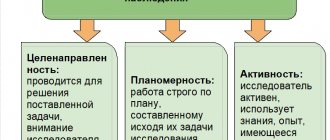Synectics is a method of combining diverse, often completely incompatible elements when posing a problem and finding solutions. Have there been times in your life when solving problems came to a dead end? Dozens of options have been considered, but the process still stands still? In such cases, the synectics method is an excellent choice. It allows you to see the situation from the other side. Using this technique will help you find an unexpected, perhaps incomprehensible or absurd solution. But does it matter what it looks like if the problem is solved?
When and how did the method appear?
The synectics method appeared in the middle of the last century. Then inventor and thought researcher William Gordon and his colleague George Prince made a discovery. They found that group and individual creativity are similar. This was the impetus for the creation of a research group (Cambridge) in 1952. She studied and improved an interesting method called synectics. This word reflects its essence. Translated from Greek, it means a combination of several dissimilar elements.
Today synectics is a method of brainstorming. It involves discussing the problem, using metaphors and analogies. According to William Gordon, the latter help to get rid of limited thinking. The main thing is to understand how knowledge from one area is applied to another.
An example of the effectiveness of synectic assault is Gordon’s collaboration with Kellogg, the manufacturer of Pringles chips. There was a problem with the packaging. You need to make it compact and convenient. But how? Using the method of synectics, Gordon compared packaged chips with fallen leaves collected in bags. Dry ones take up more volume than wet ones. The latter are more elastic and softer, due to which they fit more compactly into bags and sacks. According to the inventor, the same should be done with chips. He suggested moistening the potato flour used to make them. The result is obvious.
In the early 60s, William Gordon published the book Synectics: Developing the Creative Imagination. And a little later he founded the company Synectics Inc, specializing in teaching creative thinking.
Definition of the concept
The word "synectics" has Greek roots. Literally it means the connection of different, at first glance, clearly incompatible elements. The main idea of synectics is to unite several creators into one group. This helps to jointly set and then solve a specific creative problem.
What is this method based on? Synectics makes it possible to use unconscious mechanisms that manifest themselves in a person’s thinking during his creative activity. Gordon, with his method, put forward a kind of protest against the traditional point of view, which, before his research, considered creativity as the primacy of the individual genius. Of course, the author did not at all deny the great role of “personal insight,” but on the other hand, he argued about the need for a “directed search” for the necessary solutions in the system.
How does the synectics method work?
As stated above, the essence of the synectics method is to search for analogies. They come in 4 types:
- Direct. These are similar features of objects used to solve similar problems. This includes the similarity of natural data or technical characteristics. Imagine that you are faced with the task of improving the process of painting furniture. But you don't know how best to do it. Draw an analogy with coloring other objects. Let it be, for example, paper. Or think about the colors of flowers and animals.
- Symbolic. You need to see metaphors and paradoxes in ordinary things. Here synectics offers to look at the familiar from an unusual angle. This type of analogy is often used in art. It often appears in everyday life. Take, for example, the familiar phrases “living dead” or “guilty without guilt.”
- Personal. Try to identify yourself with the phenomenon or object being studied. Put on its functions and characteristics. This will help change your perspective on things. At first, such analogies will seem ridiculous and even meaningless. However, this is an opportunity to see new facets and sides of the subject. Such an analogy requires rich imagination and developed imagination.
- Fantastic. In the case of this analogy, you can use all your imagination. Imagine the object in the most fantastic or even unrealistic conditions. Let him be free from physical laws. Be a science fiction writer. Perhaps at this moment you will see how to solve the problem without being tied to the existing reality.
Using the analogies listed above, you will use all types of thinking. Thanks to this, you will see the full picture of what is happening.
Personal (subjective) analogies
This method invites the inventor to imagine himself as a part or detail of the object being improved. Here the developer is required to go through a process of mental transformation, which is only possible with a vivid imagination.
The use of the method of synectics of subjective analogies sets the goal of examining from the inside the nuances of the problem posed, which is simply beyond the power of human thinking due to its inertia.
This will allow you to see and feel the subject of inventions with the help of simple thoughts. Sometimes making such analogies is absolutely ridiculous. However, this is not the main thing. After all, something else is important here. A creative person needs to notice and experience new aspects and facets of a problem that are simply impossible to discern using logical reasoning.
Stages of synectic solution
The search for new ideas using the synectics method is carried out in 8 stages. Each of these is explained in detail in William Gordon's book.
- To begin with, identify the problem. None of the participants knows her. Information is available only to the manager. It is not disclosed by accident. If a person knows everything in advance, it is difficult for him to switch from the usual way of solving problems to a creative, creative one. The problem is covered in general terms.
- At stage 2, the problem is divided into parts. The most complex ones are divided into small ones.
- Group members study the issue, analyze the details, and draw conclusions. To do this, they use previously obtained information.
- Now it's time to select analogies and metaphors. In synectics, this is a way to understand the essence of the problem, to consider it from the inside.
- The next stage is to study the problem from an unusual angle.
- Participants will have to tell how they understood the situation. Here again analogies come into play.
- The most appropriate analogy is identified with the task at hand. As a result, any restrictions are removed and boundaries are expanded.
- This stage involves searching for solutions. Group members need to find a suitable option and express ideas about it. The solution is then projected onto the problem.
At the last stage, experts work. They evaluate and analyze the work done. And then they think about how to apply the solutions found in practice.
An example of using synectics to find solutions
One example is given above. The creator of the technique brought it to life while working with the company that produces Pringles chips.
There is another example. Imagine a foundry. At one of the production stages, sandblasting of finished products occurs. The problem is that sand gets into the cavities of the parts. It takes a lot of time to remove it. In addition, these are additional costs. Engineers were looking for a way to make sure that grains of sand cleaned the metal, but did not remain in the product.
Experts made an analogy with ice. When it melts, it disappears. Why not apply this feature to the production of parts? It was decided to use dry ice particles instead of sand. They effectively cleaned the metal, and then, turning into gas, evaporated.
Advantages and disadvantages of synectics
The synectics method, which refers to the brainstorming technique, has a number of advantages. Here are some of them:
- Productivity. A properly assembled synectic group and a non-standard approach work faster than other techniques for solving assigned problems.
- The process of finding solutions is carried out as efficiently as possible. Synectics involves using all types of thinking at once. Each participant maximizes their potential. Other methods cannot boast such achievements.
- The team is constantly developing. Not only does it solve countless problems. Each group member gains experience, learns something new, and finds a common language with colleagues. This has a beneficial effect on the company's work.
- Extraneous costs and random factors are reduced. During a classic brainstorming session, a lot of time is spent listing options for solving a problem. In synectics, group members criticize each other's statements. As a result, they find real solutions that are applicable in a given situation, rather than listing everything that comes to mind.
Despite the undeniable advantages, the synectics method also has some disadvantages:
- Long-term training. Participants in the synectic group need to undergo special training. These are seminars, online courses, trainings. This includes reading relevant literature. In any case, the process will take a lot of time.
- Only qualified specialists should be recruited into the group. They must be motivated, have a loyal attitude towards the company and a desire to participate in discussions.
Another disadvantage is the separation from production. The group needs multidisciplinary specialists. Their absence on site reduces the efficiency of the company.
Working conditions
To successfully carry out the synectic procedure, you need:
— mandatory initial abstraction of group members from tasks and problems; - restraint of expressed opinions and refusal of a final conclusion; — ease and naturalness in discussions; — predisposition to modeling and acting out the situation; — rationality of judgments.
As can be seen, in the initial stage of the synectic procedure, metaphors, analogies and images find their use. Rationality appears only at its final stage.
How to create a synectic group
Group formation occurs in 3 stages:
- The first step is to select participants. They undergo special tests, the results of which determine the level of erudition, education, ability to think outside the box, and knowledge in certain areas. It is better if candidates have different professions. Preference is given to those who have two specialties that are incompatible with each other. An example is an engineer-economist or a physicist-doctor.
- The second stage is training. In Russia, the synectics method is not popular. Therefore, there are no methodological and educational developments concerning it. And the experience of other countries is ignored. There are special institutions abroad that are engaged in training synectic groups. The process takes a year. Face-to-face classes are held in the centers. This is a theory. Then practice begins. “Students” go to their enterprises to solve real problems.
- At the last stage, the prepared group is introduced into the company.
Sometimes company management decides to create a synectic group from its employees. Another option is to order a ready-made team for one-time or regular cooperation.










